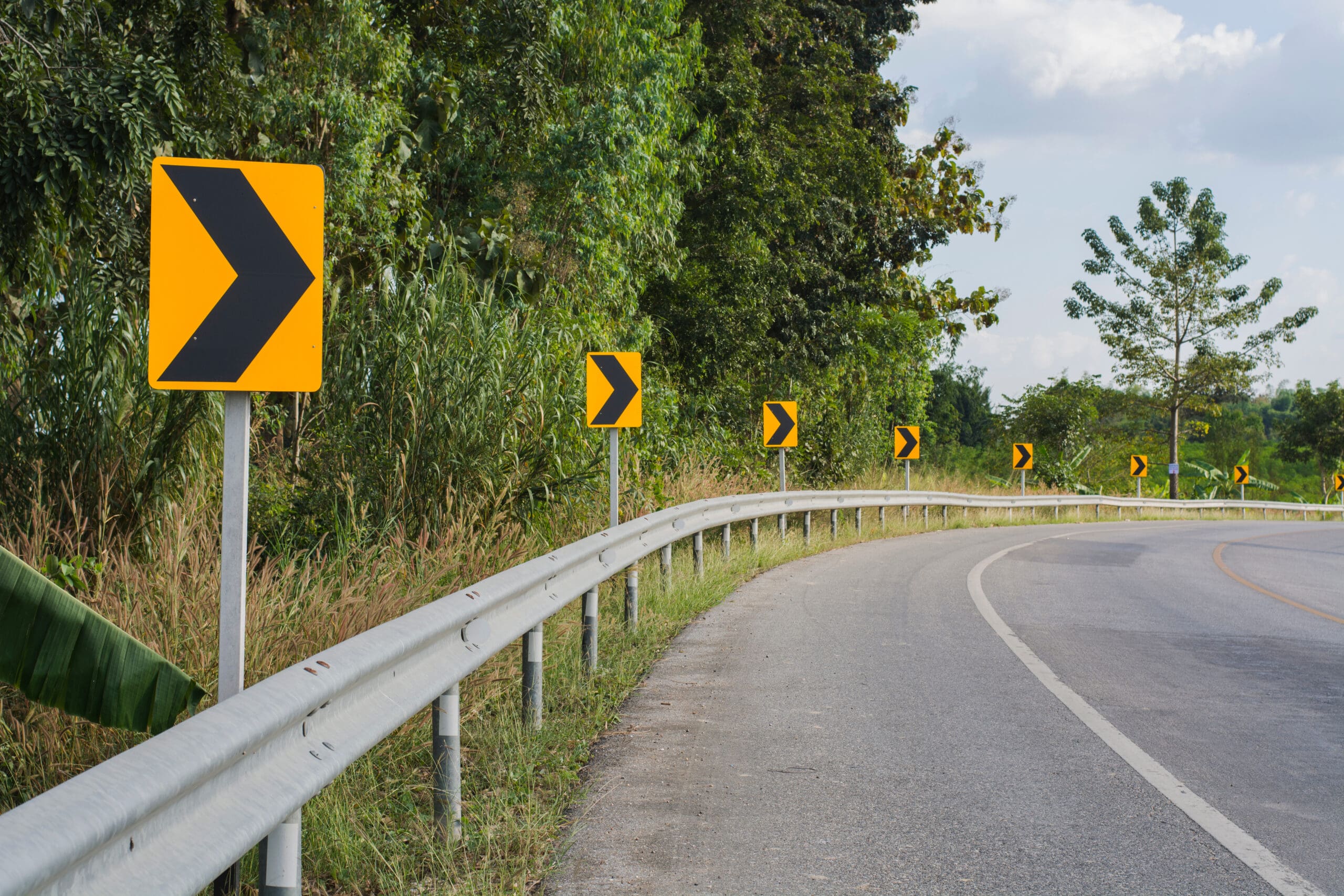Picture yourself driving on a rural road. Maybe you’re winding your way through rolling fields of corn or cattle. Maybe you’re high in the mountains, maneuvering curves like a pro. Maybe you’re cruising through the desert in a pink plastic convertible, singing along to Indigo Girls.
Wherever you are, chances are you feel relaxed—at least compared to how you might feel driving on a multi-lane freeway, or in a busy urban environment with traffic signals, hidden driveways, pedestrians, cyclists, and a dozen other things all competing for your attention.
But just because rural roads can sometimes feel safer doesn’t mean they actually are. In fact, the risk of dying in a crash is actually higher on a rural road than an urban one. Almost half of all fatal crashes in the U.S. occur on rural roads, even though only 19% of the population lives there, and they account for just 31% of vehicle miles traveled (VMT).
The disproportionately high fatality rate on rural roads is the result of a number of factors, including high speeds, sharp curves, hidden intersections, and poor lighting—not to mention a lack of safety features like pavement markings and guard rails.
The good news is, we have the tools to fix this. Whether it’s enhancing existing signage with flashing lights to increase drivers’ awareness of potential hazards or installing dynamic feedback displays to bring speeds down, there’s no shortage of effective ways to make rural roads safer. We just need to use them.
Horizontal curves + chevron signs
Nearly 25% of people who die in vehicle crashes each year are killed at curves. Of these, the vast majority (78%) are roadway departure crashes (“those in which a vehicle crosses an edge line, a center line, or otherwise leaves the traveled way” – FHWA).
One of the most common ways of countering roadway departures is with chevron signs, or chevron alignment signs, as they are called in the MUTCD. Typically installed on the outside of a curve, these yellow-and-black signs bring attention to changes in horizontal alignment, reminding drivers to slow down as they enter.
While effective on their own—the FHWA says they can reduce nighttime crashes by up to 25%—problematic curves (i.e. those with above-average crash rates) can benefit from enhancements, such as signs with embedded LEDs around the chevron symbol. Carmanah’s MX Series chevron signs are an excellent choice, offering agencies better sign conspicuity with the added benefit of remote connectivity.
Unsignalized crossings + intersection conflict warning systems (ICWS)
Unsignalized road crossings, meaning places where two roads meet but no traffic signal is present to control the flow of traffic, are a common feature of rural and remote areas. They’re also extremely dangerous, due to high speeds, low visibility, and vertical and horizontal curves, which can make it dangerous for drivers on minor roads to cross or turn onto higher speed mainlines.
Static warning signs (such as “Hidden intersection ahead” or “Traffic Entering When Flashing”) can help increase awareness of potential conflict areas, but quickly become “part of the background” for regular commuters and can be hard to see in dark and adverse conditions.
Intersection Conflict Warning Systems overcome these issues by using radar-triggered beacons (or LED-enhanced signs) to provide dynamic alerts to drivers approaching on either the high-speed mainline, stop-controlled crossroad, or both. Before-and-after studies of ICWS sites have shown crash reductions of up to 19%, according to the FHWA.
Speeding + radar speed signs
Driving too fast is a problem on all roadways, but the consequences of speeding on a rural road can be particularly severe, with less traffic, and longer distances to emergency services, and not enough road markings and physical barriers like guardrails, all contributing to worse outcomes for rural crashes.
Although they are more commonly found in neighborhoods, particularly in and around playgrounds and school zones, radar speed signs are also highly effective at getting drivers to slow down on rural roads. One study that looked specifically at radar speed signs installed at “rural highway transitions into urban areas” found a 6-8 mph reduction in speed.
Radar speed signs can be implemented in a variety of ways, from displaying an advisory speed ahead of a curve to flashing a “slow down” message when transitioning from a higher speed zone to a lower speed one (such as when entering a community). Carmanah offers three SpeedCheck radar speed sign models, which come with customizable alert settings and an easy-to-use app for setup and programming.
It’s time to make rural roads safer
While efforts have been made to address the problem of rural road safety in recent years, the consistently and disproportionately high fatality rate is proof that not enough is being done. The countermeasures described in this article will go a long way toward improving safety and reducing fatalities.
To learn more:
